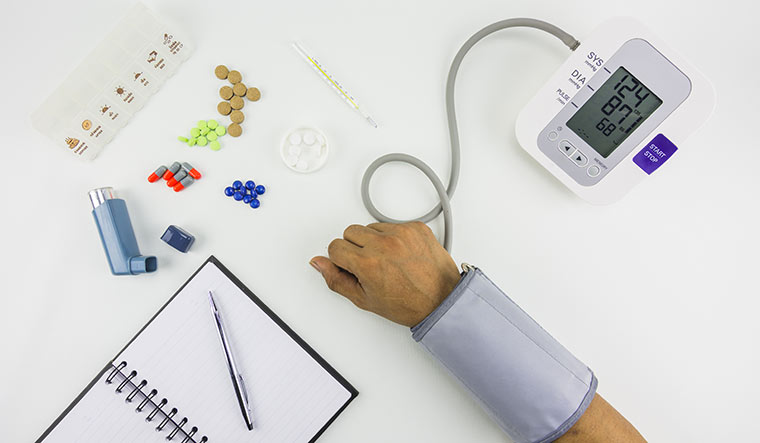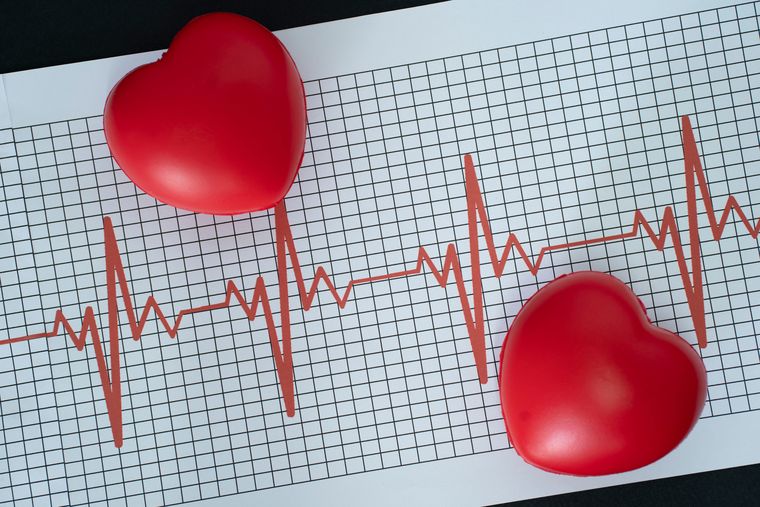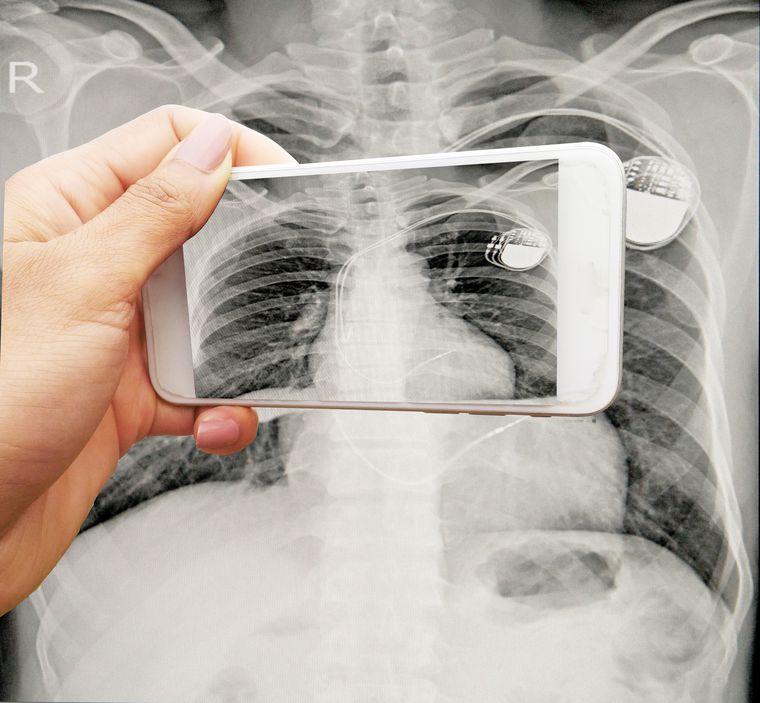JUST HALF AN HOUR of walking, or similar activities, every day can reduce the risk of death from any cause in stroke survivors.
The Canadian study published in the journal Neurology included 895 stroke survivors with an average age of 72 and 97,805 people, average age 63, who had never had a stroke.
The participants answered questions about their daily physical activity. Around 25 per cent of the stroke survivors and 6 per cent of the people who had never had a stroke died of any cause during an average follow up of 4.5 years. In the stroke group, 15 per cent of the people who exercised at least the equivalent of three to four hours of walking each week died compared to 33 per cent of those who did not exercise that much. In the group of people who did not suffer a stroke, 4 per cent of those who exercised that amount died, compared to 8 per cent of those who did not.
Stroke survivors who engaged in three or four hours of activities like walking or gardening, two to three hours of bike riding, or an equal amount of other physical activities, per week, had a 54 per cent reduced risk of death from any cause. The risk of death was reduced by 80 per cent for stroke survivors under the age of 75 who met the minimum level of physical activity.
Cancer survivors age faster
CANCER SURVIVORS are more likely to experience accelerated ageing and functional decline than those without a history of cancer, according to a study published in the Journal of the American Geriatrics Society.
There is growing evidence that cancer and its treatment may adversely affect ageing-related processes.
The researchers evaluated the functional status, including grip strength and gait speed of 1,728 men and women, above the age of 22. Among them, 359 reported a history of cancer.
Overall, those who survived cancer were 1.42 times more likely to have a weaker gripping strength.
Cancer survivors who were older than 65 years had 1.61 greater odds of slow gait speed than those with no cancer history. They also had lower physical performance scores.
Cancer survivors also experienced faster declines in grip strength and gait speed as they grew older.
Did You Know?
Wearable fitness trackers like Fitbit and smartwatches are highly effective in helping overweight and obese people lose weight, lower their BMI and reduce their risk of related illnesses such as cancer, type 2 diabetes, cholesterol and heart disease.
British Journal of Sports Medicine
Non-surgical treatment for arthritis
A MINIMALLY INVASIVE, non-surgical treatment effectively reduces pain and improves function in patients suffering from knee arthritis, according to findings of a study presented at the Society of Interventional Radiology’s Scientific Meeting.
Genicular artery embolisation (GAE) provides immediate and lasting pain relief by reducing inflammation in the knee for people with moderate to severe knee pain. The study included 40 patients between the ages of 40 and 80 who were not eligible for total knee replacement and did not benefit from other treatment options.
Under localised sedation, a catheter was inserted through a tiny incision in the hip and tiny particles were delivered into the arteries in the knee to reduce blood flow in the joint and thereby decrease painful inflammation in the knee.
The patients saw benefits within three days of the procedure. Average pain scores decreased from eight out of 10 before the procedure to three out of 10 within the first week. About 70 per cent of patients reported more than 50 per cent reduction in pain scores at the one-year follow up.
Did You Know?
People who sleep six to seven hours a night have the lowest risk of dying of a heart attack or stroke compared to those who sleep less or more.
Study presented at the American College of Cardiology’s Annual Meeting
Sugary sign
PEOPLE WHO ARE diagnosed with diabetes at a younger age have a greater risk of developing dementia later in life, according to a French study published in the Journal of the American Medical Association.
The findings were based on 10,095 diabetes free adults who were between the ages of 35 and 55 at the outset, in the 1980s. Over 30 years of follow up, 1,710 people developed type 2 diabetes and 639 people were diagnosed with dementia.
Overall, each five-year earlier onset of diabetes was associated with a 24 per cent increased risk of dementia.
Compared to participants without diabetes at age 70, those who had been diagnosed with type 2 diabetes five years earlier or less had a 11 per cent increased risk for dementia.
The risk rose substantially as the years lived with diabetes increased: those who were diagnosed six to 10 years earlier had a 49 per cent increased risk of later dementia, and those diagnosed more than 10 years earlier had more than double the risk.
Dementia risk was particularly high among diabetes patients who also suffered a stroke and had other cardiovascular diseases.
Did You Know?
An analysis of studies that included 1.8 million women of all reproductive ages who underwent fertility treatment and were followed for an average of 27 years found that using ovarian stimulating drugs did not increase their risk of developing breast cancer.
Fertility and Sterility
Less popular, but safer
BOTH ANGIOTENSIN-converting enzyme (ACE) inhibitors and angiotensin receptor blockers (ARBs) are recommended first-line treatments for high blood pressure. But doctors tend to favor ACE inhibitors as they have been around longer and tend to be cheaper than ARBs. While both classes of medications are equally effective in improving cardiovascular outcomes, the less popular type causes slightly fewer side effects, finds a US study published in the journal Hypertension.
To compare the safety and efficacy of ACE inhibitors and ARBs, the researchers analysed the medical records of nearly 3 million patients who were starting treatment for high blood pressure with either an ACE inhibitor or an ARB.
The vast majority of patients (2.3 million) were started on ACE inhibitors. Only about 6,74,000 patients were prescribed an ARB.
The researchers looked for four cardiovascular events, heart attack, heart failure, stroke, and sudden cardiac death, and 51 side effects in patients once they started the medications.
There were no significant differences between the two types of drugs in reducing the risk of major cardiovascular events. But patients taking ACE inhibitors had an increased risk of developing chronic cough and angioedema (swelling under the skin, often in the face). They also had a slightly higher risk of pancreatitis and gastrointestinal bleeding.
Intermittent fasting: Is it effective?
INTERMITTENT FASTING is widely popular among people trying to lose weight. But does it live up to the hype?
A British study published in the journal Science Translational Medicine finds that intermittent fasting is not a magic bullet when compared with other standard diets that focus on reducing overall calorie intake.
As part of the study, 36 healthy volunteers were allocated into one of three groups: Group 1 fasted on alternate days and on non-fast days they ate 50 per cent more than usual; group 2 reduced their calorie intake across all meals every day by 25 per cent (traditional dieting strategy); and group 3 fasted on alternate days like group 1 but ate 100 per cent more than usual on their non-fast day.
Groups 1 and 2 reduced their overall calorie intake by 500-1,000 calories during the three-week study period. Even though group 3 fasted, they did not reduce their overall calorie intake.
At the end of the study period, participants in group 2 lost more weight than those in groups 1 and 3, even though the calorie intake of groups 1 and 2 was identical.
High risk phase
The risk for a recurrent heart attack is highest in the first two weeks after the first heart attack, concludes a US study published in the Journal of the American Heart Association.
To analyse the chances for a second heart attack within 90 days of being discharged from hospital after the first one, the researchers looked at data from 6,626 admissions for heart attack at Cleveland Clinic.
Among them, 168 patients suffered a second heart attack within 90 days of discharge. The average patient age was 65 years and 37 per cent were women.
Patients who were medically managed had a higher chance of a recurrent heart attack than patients who were revascularised. Stent-related events and progression in coronary artery disease accounted for most recurrent heart attacks.
The overall risk for a recurrent heart attack was only about 2.5 per cent. But nearly 50 per cent of these patients died within five years from any cause compared with 22 per cent of the patients who did not suffer a second heart attack.
Did You Know?
A Canadian study has found that patients cared for by female physicians had lower in-hospital mortality rates than those cared for by male doctors.
JAMA Health Forum
Colourful food reduce cognitive decline
PEOPLE WHO CONSUME at least half a serving a day of food high in flavonoids such as berries, citrus fruits, peppers, pears, bananas, celery and apples have a 20 per cent lower risk of cognitive decline, according to a US study published in the journal Neurology.
Naturally occurring compounds found in colorful fruits and vegetables, flavonoids are rich in antioxidants which play a huge role in preserving brain health.
The researchers looked at the flavonoid intake and self-reported cognitive decline of 49,493 women, average age 48, and 27,842 men, average age 51. The participants were followed for over 20 years.
People who consumed the most flavonoids had about 600mg daily, while those who ate the least had about 150 mg. Those who consumed the most flavonoids had a 20 per cent lower risk of cognitive decline than those who ate the least.
Anthocyanins, another type of flavonoid found in blueberries, blackberries and cherries, were associated with a 24 per cent reduced risk of cognitive decline.
Magnets in smart devices may affect pacemakers
THE US FOOD and Drug Administration has issued warnings that magnets in some cellphones and smartwatches can cause pacemakers and other implanted medical devices to malfunction.
High field strength magnets found in many newer electronic devices such as cell phones and smart watches can cause some implants to switch to “magnet mode”. This might affect the normal functioning of the medical devices until the magnet is moved away from the medical device.
Many medical devices have a “magnet mode” that can be activated during medical procedures, such as MRI scans. This is done by placing a high field strength magnet near the implanted device. Removing the magnetic field after the procedure restores normal functioning of the medical device.
The FDA advised patients with implanted medical devices to take the following precautions: keep consumer electronics, such as cell phones and smart watches, six inches away from implanted medical devices; do not carry consumer electronics in a pocket over the medical device; check your device using your home monitoring system, if you have one.
CONTRIBUTOR: SHYLA JOVITHA ABRAHAM









